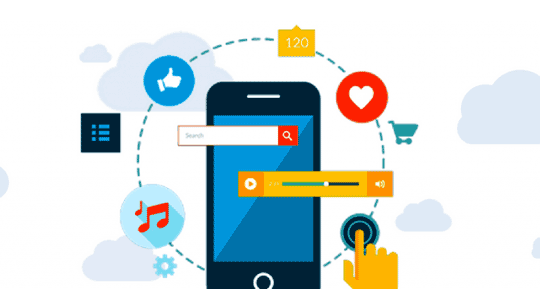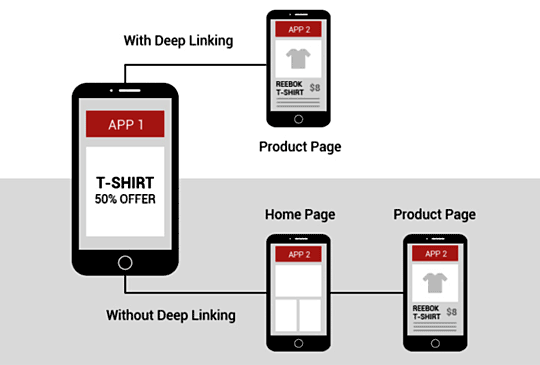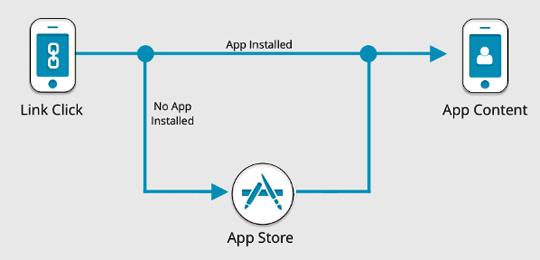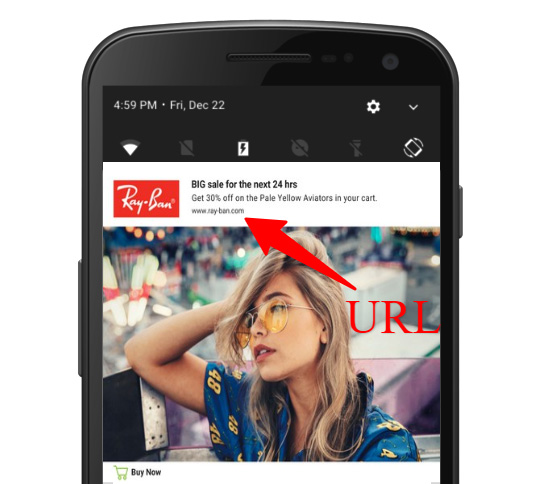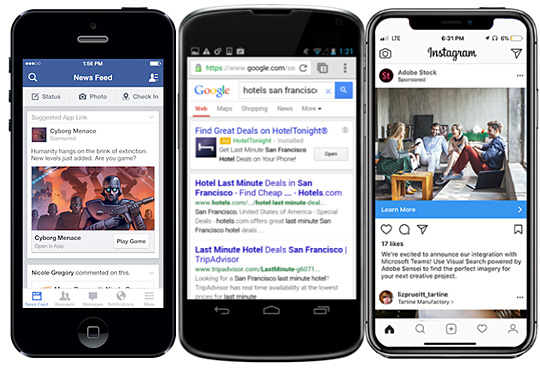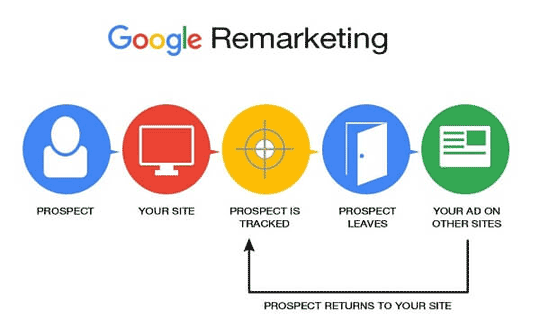Re-engagement is a practice of bringing bounced users back on a platform, page, or mobile app using multiple re-targeting methods. With re-engagement, we target users who have expressed an interest in the past but bounced without converting due to any random reason. Brands often use re-targeting to bring these users back into the conversion funnel and perform intended actions such as complete an unfinished purchase, click on a CTA button, sign-up for newsletters or anything of interest to the brand.
In precis, re-engagement remains a process of transforming your bounced users into converted customers. The type of conversion might differ from platform to platform, business to business, and time to time, and so do the modus operandi of re-targeting.
For example, an eCommerce website can launch a re-engagement campaign to convert its abandoned cart users. The website can send emails to these users, trigger push notifications to them, show re-targeted Ads in Ad exchange networks, and use Ads on social media platforms too.
Mobile App Re-Engagement – The Concept
Conversions are not limited to just eCommerce websites. Every kind of website or mobile app has its own conversion goals. Some want to make a sale, some want to refer users to other platforms, some want to engage their users, while some mobile apps merely want their users to keep the app installed.
There is a wild market out there, and it’s full of competition. For every app, website, or business, there are N numbers of other alternatives for users. Failing to engage your users, means failing to retain them on-board, and ultimately, they either abandon your mobile app or uninstall it for good. It’s a fact, and this situation is inevitable, even the most-downloaded apps in the market.
Thanks to re-targeting and mobile app re-engagement technologies, websites and mobile applications these days can obtain a second chance to reach out to their dormant or abandoned prospects and re-target them accordingly.
Why Is Re-Engagement So Important?
Modern-day businesses capitalize on trends and distinct prospects to make money. Businesses that can’t keep up with the changing trends do not survive the competition. Re-engagement is yet another name for re-marketing and the ways of bringing the lost users back with the business. Considering that, businesses get a finite set of audiences to target, looking for new users and discarding the old base would only invite the saturation point very early.
You don’t want your business to become a prey of saturation. You need to prioritize your marketing activities, and conduct campaigns to acquire not only new users but also keep your current base on-board and engaged. How can you do that as a mobile app owner, a business owner, or a website owner?
It’s simple. You need keeping your website, application, and business activity constantly relevant, competitive, accessible, quick, and valuable to the target audience. So yes, if you run a mobile app for your business, mobile app-re-engagement is as important as your business itself. Consider the following stats talking about mobile app usability for instance:
Users open 24% of the apps on their smartphones only when it’s necessary. Over 26% of users remain actively engaged with an app-only up to 24-48 HRS of the installation. The numbers go down to 13% soon after seven days of installation.
A typical mobile app re-engagement campaign deals with the ways to achieve good results on these grounds themselves. Therefore, re-engagement, re-targeting, and re-marketing make sense only when you want to attract your dormant users, who have had already engaged with you at some point in time earlier.
Top Re-engagement Strategies You Can Follow Right Now
Communication is the biggest key to re-engagement. If you can communicate with your lost users, you persuade them to come back. However, establishing a communication channel itself is not an easy job. Take mobile app users for instance. If they still have the app on their phone, you can always send in-app messages to communicate, but you cannot do anything if they uninstall it.
That’s where advanced re-targeting tactics come into play. You can rely on a combination of the following strategies to launch your re-engagement campaigns:
Mobile App Deep Linking
We can’t link two mobile apps with each other using the same ways as we do to link two websites. HTML hyperlinking doesn’t work in mobile apps. This is where we need deep linking to link different mobile apps together or link a website with a mobile app. Using deep linking, we can funnel down users from the web right into a mobile app. Deep links allow a mobile app developer to interconnect an app with web resources using a Uniform Resource Identifier (URI).
Take social media Ads for instance. Have you seen an Ad on Instagram or Facebook recently? Did you notice how clicking on some of these Ads opens the relevant screen on a particular mobile app?
It’s because these social media Ads are deep-linked with respective mobile apps. If you click on an Ad from Amazon on Instagram or Facebook, it will open the targeted screen in the Amazon app, if it is already installed on your phone.
What happens if you don’t have Amazon’s app installed on your phone? If you have the app, it will open the app screen. However, if you don’t have the app, the Ad either directs you to the Amazon website or to the respective App Stores to install the app. This also happens because of deep linking.
This technology is not limited to just social media Ads or eCommerce applications. You can create an interconnection between any two mobile apps or between websites and mobile apps. Deep linking is not just a re-engagement strategy for mobile apps but a necessary requirement, if you want to make the best use of social media Ads, Display Ads, and or any kind of re-targeting tactic.
Mobile And Web Push Notifications
Marketers need two main factors to re-engage a lost user:
- A communication channel, and
- A reason to come back
Push notifications can facilitate both the factors with no extra support. You can send push notification to not just your mobile app users but also the website users. Web-push-notification tools allow marketers to send messages right on the web browsers with certain URLs link to them. Users, then click on the web push notifications, re-direct on the target URL instantly.
As per mobile app push, notifications are concerned, the same deep linking can connect your mobile app right into your push messages and in-app messages. Depending on the relevance of your messages and ability to encourage them to click on them, both web and mobile app push notifications can re-engage your users with just a click of a button.
According to Localytics, push notifications alone can boost your mobile app’s open-rates by 25% and user-retention rates by over 92%. We can’t deny the fact that push notifications make one of the most efficient channels for re-targeting.
Where traditional marketing channels like email struggle at 20% open rates and 5.4% click-through rate, push notifications to give much better ROIs. That’s why even the social media applications like Facebook, Instagram, and Twitter rely on push notifications to keep their users engaged through real-time updates of what’s happening in their circles and with the profile.
Using push notifications, marketers can convey their communications in real-time. Spam filters do not bar push notifications and marketers do not need users’ personal information to send these messages. Hence, making these perfect for re-engaging the users without knowing them individually.
Paid Social Media, Search Engine and Display Ads
Although they are expensive, premium Ads are your best bet to re-target users across the internet. If you can spare some budget to run paid advertisements on social media, search engines, Ad exchange networks, you will definitely notice a quick result.
You can run three types of Ads to re-target the users from all around.
- Social media Ads: Facebook Ads, Instagram Ads, Twitter Ads
- Search Engine Ads: Google search Ads, Bing search Ads
- Display Ads in different Ad exchange networks: Google Display Network
Please note that deep linking is still crucial if you are running your Ads for your mobile app.
If you recollect what we discussed about Facebook Advertising and Instagram Ads, in the beginning, you will understand how we can funnel down users from Ads to your mobile app. In the same way, you can funnel down users from all other Ad networks too.
Have you ever noticed, how you browse a certain product on the Amazon app, and later when you visit any other website or any social media app, you see the Ad of that product there? That is Display Ad Network, which re-targets users across all a network of websites and mobile applications.
If your marketing budget permits, you should try out premium Ads on Instagram, Facebook, Twitter, YouTube, and Google etc. for quick results. You don’t need to target them all; you can target the platform that you think are used by most of your target users.
This has been yet another awesome Social Media Revolver Sponsored Post. If you would like to get one for your business, please have a look at our Advertising Options.
[Images – Main Image by Karen Warfel from Pixabay; rest by the author and from their respective websites and/or social platforms]
A marketing professional with expertise in strategies to engage customers and improve business opportunities. Interested in marketing communications and like to keep abreast of new trends and developments.

